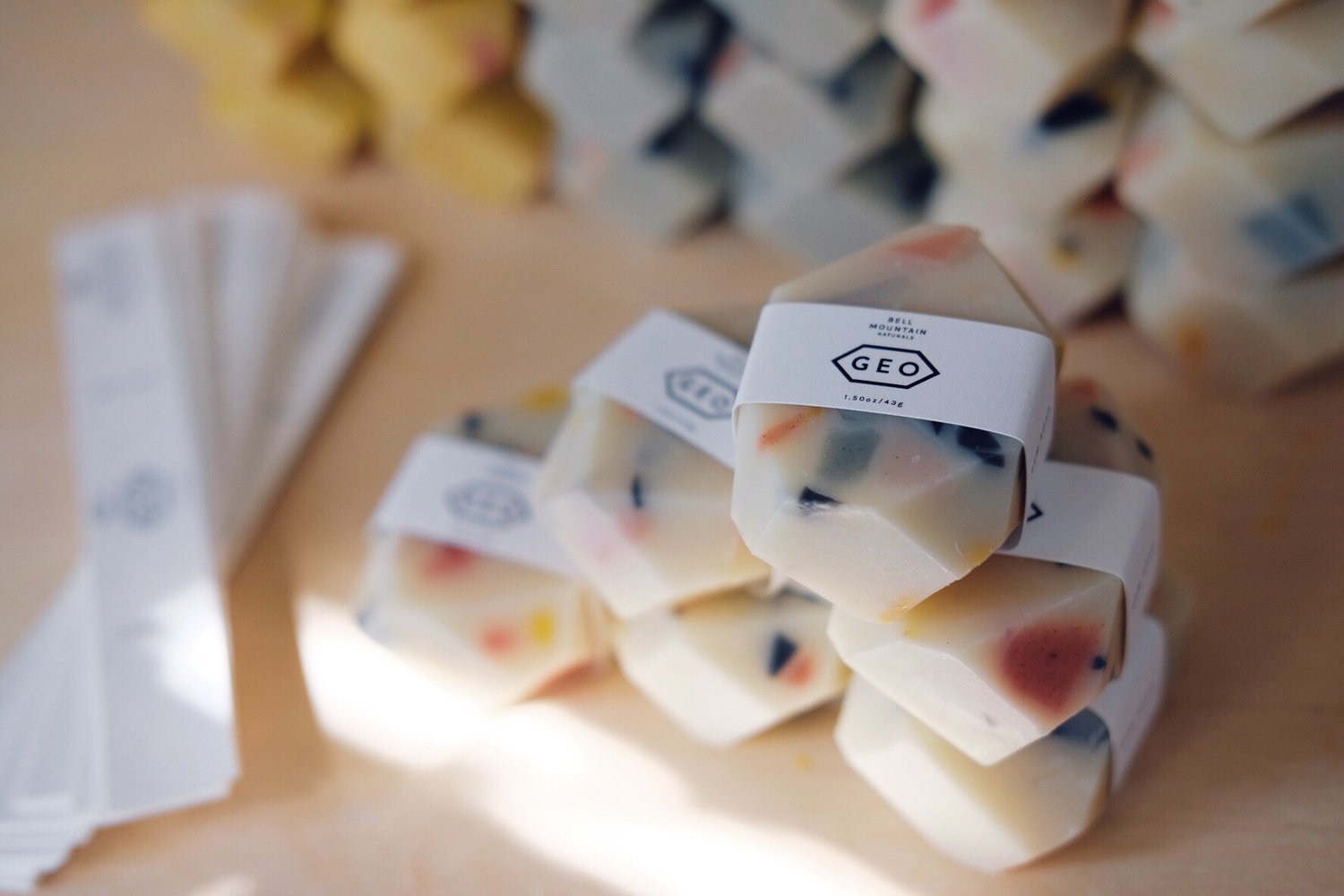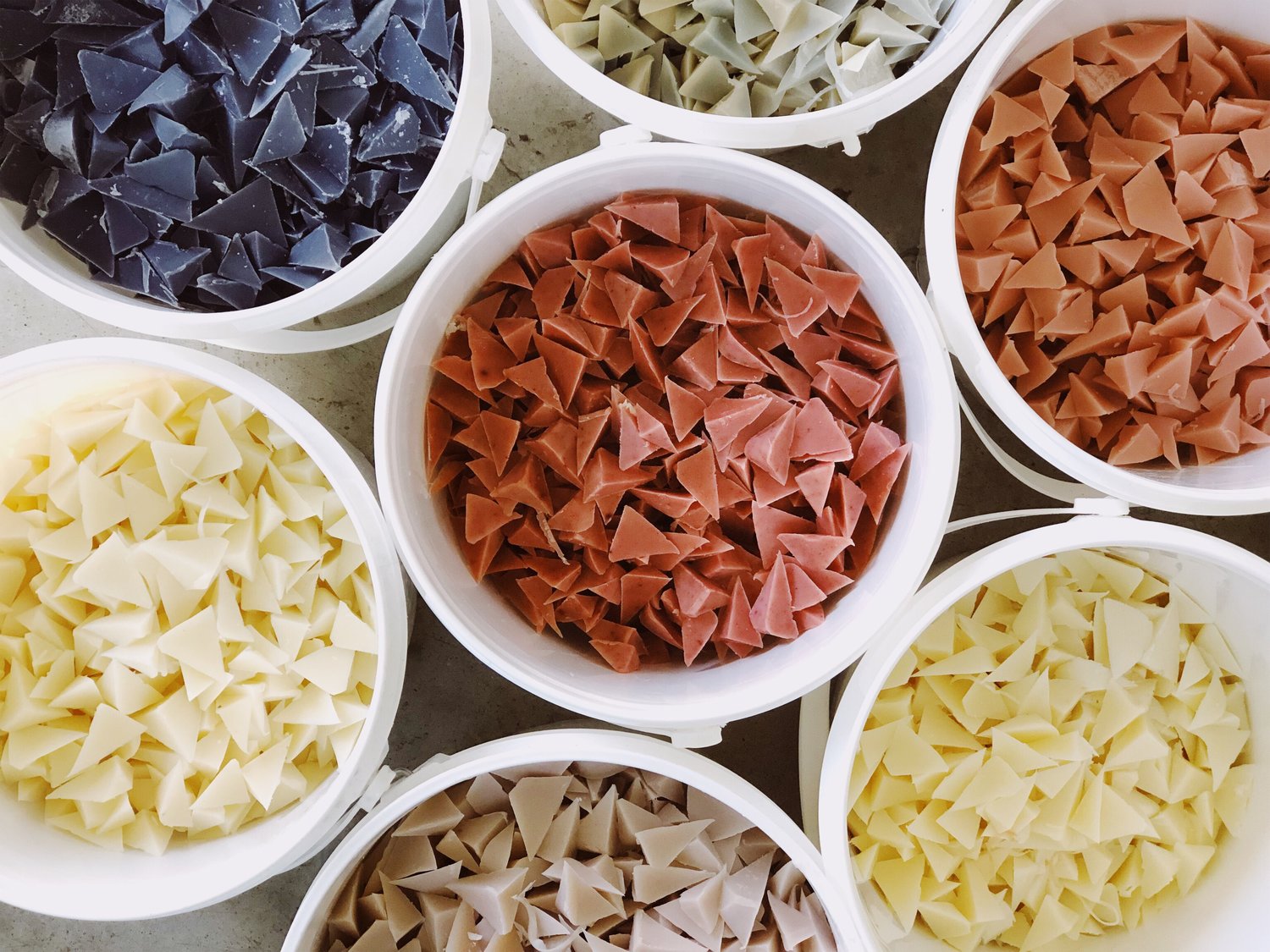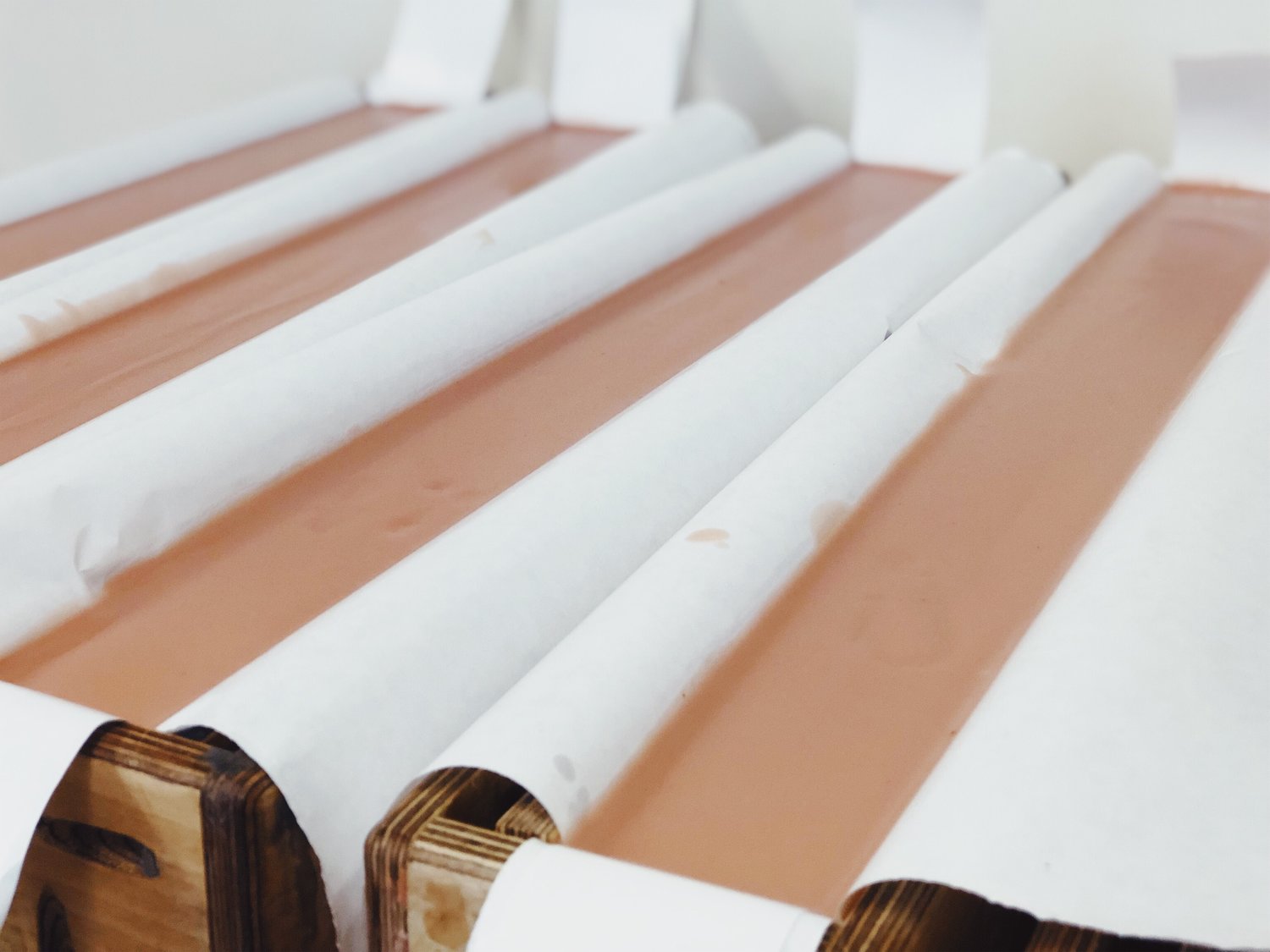By Sarah York’s account, her family is full of makers and creatives — she just never quite thought of herself as one. In fact, it wasn’t until she learned how to make soap from her aunt in 2012 that the chemist-by-study found a practical use for her inherited creative inclinations. Always in search of products that would work well with her own sensitive skin, Sarah then took what she had learned about fatty acid profiles in college and began making her own line of bar soap, producing so much that she always had gifts ready for family and friends.
Sarah soon began selling her line, Bell Mountain Naturals, on Etsy, applying the skills and experience she had acquired as a real estate agent to her new business endeavor. She set modest goals for herself — cover the costs of production — but mostly just wanted to see where the venture could lead. In 2016, Sarah moved to New Jersey, and the timing seemed right to finally turn Bell Mountain into her full-time job. She launched a new website and began selling at fairs and other public events to see if there was a space within the market that her passion project could fill.
With an emphasis on positively impacting environments from which their ingredients are sourced — and that goes for the biological environment as much as the workers behind the labor — Bell Mountain Naturals continues to manufacture high quality, eco-conscious soaps and skincare products. They are a Leaping Bunny certified company as of 2017, meaning their products and sourced ingredients are animal cruelty-free. All that to say, we’re incredibly proud to stock such a conscientious maker. Thanks, Sarah, for all your impactful work and thoughtful products!
Read our interview with Sarah below.
Courtesy of Sarah York
Meet the Maker: Bell Mountain Naturals
S&A: Tell us a little bit about how Bell Mountain Naturals came into existence. What is your background in, and what were your goals when you first launched?
S: I started making soap as a hobby in 2012. I asked my aunt, who is also a soap maker, to teach me, and I was completely hooked. I have sensitive skin and was always on the search for gentle skincare products with simple ingredients that didn’t break the bank. I also studied chemistry in college, which gave me a solid foundation of fatty acid profiles and the benefits they added to bar soap.
Eventually, I started making more than we could use and I would give them away as gifts to family and friends. I knew right away I wanted to make it into a business, but didn't have the slightest clue what that path looked like.
My family is full of makers, artists, and creatives. Our house was always in a state of creating, but I never considered myself to be artistic. Soap making gave me an outlet that satisfied that creative need but had a practical everyday use.
Once I made the decision to sell my soaps, I started an Etsy page. I didn't have a plan — it was like, "Let's see what happens!" My initial goal was to cover the costs of making soap. Luckily, at the time I was a real estate agent and was able to take what I learned about business from that and apply it to my soap business.
When we moved to New Jersey in 2016, I decided that was the perfect time to make the leap and turn Bell Mountain into my full time endeavor. I launched a website and started doing markets to get feedback and to see if there really was a market for what I was making.
Courtesy of Sarah York
S&A: What is your ingredient sourcing process like when you're working on new products? Are there key factors that you all look for in a source when determining if it aligns with BMN core values?
S: It's definitely a constant state of learning, but I knew right away I wanted Bell Mountain to have a positive impact on local ecologies, environments etc., while keeping it at a price point that is attainable. When I started, I read about the effects of the palm industry and knew I couldn't be part of that. (Palm oil is considered "standard" in most soap formulas). I started formulating all our soaps to be palm free, using shea butter as an alternative for all its wonderful skin-loving properties. When I realized shea came with its own set of problems like abuse and unfair practices. I knew we had to find a solution that didn't exploit people or the environment. We started using organic shea sourced from women's cooperatives that ensure safe labor methods.
I was recently working on a formula using palo santo, but ultimately decided against it because it has been overconsumed to the point of being an endangered species.
Each ingredient we use, the companies we source our ingredients from, and the impacts they have are all considered before being added to our line. I went through the process to get Leaping Bunny certified in 2017. It feels good to know we have commitments from our manufacturers that they are cruelty free across the board.
Courtesy of Sarah York
S&A: Why is it important to you that your products contain natural ingredients and are packaged in either recyclable or reusable materials?
S: I think it's super easy to overcomplicate things, and looking at my own life and the products I have used has been eye opening. I was in a cycle of using harsh synthetic ingredients on my skin that in turn made other problems, and before I knew it, the long list of products I was using felt ridiculous. That's not to say there isn't a time and a place. But for me, most of the time, I found keeping it natural and simple was the best practice.
Once I realized that, I wanted it to translate into all our products. I feel like we, as women, are targeted with so many products to make us younger, less wrinkles, skinnier, etc., and I didn't want to be a part of that. I think having healthy, happy skin is enough.
For packaging, I couldn't in good conscience make a brand that ignored important environmental issues we all face. Like this whole process, it's been a learning curve. I use compostable bags and recently found out they can only truly be composted in commercial grade composting sites. That really bummed me out and has sent me back to the drawing board.
It can be hard as a small manufacturer sourcing eco friendly packaging. There aren't a lot of cost effective options available. But I feel it's getting better each year.
Courtesy of Sarah York
S&A: What serves as inspiration when coming up with new products for BMN?
S: Inspiration comes from all over, but the simplicity and beauty of nature will always be my guide. It's also part of the challenge for me — to make something that fills a hole, or at least offers a greener alternative to conventional products.
S&A: Do you have any personal habits or routines that you've found help the creative/making process?
S: I have a tendency to not stop and will be busy for busy's sake. If I don't feel "productive", I can get down on myself. But learning (slowly) to step back and pause is where I find the biggest moments of growth. To be honest, I’m still trying to find my groove through this whole process haha!




